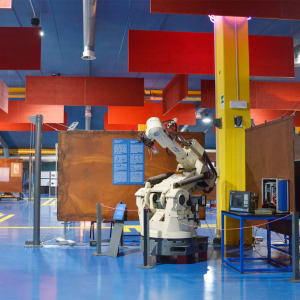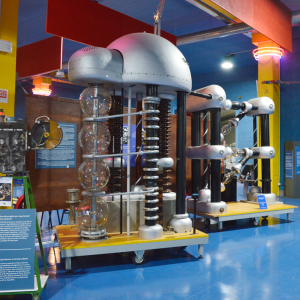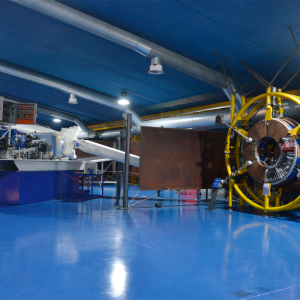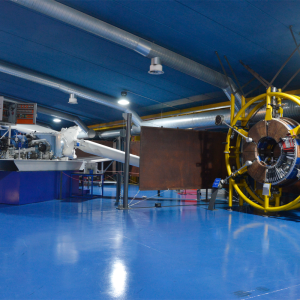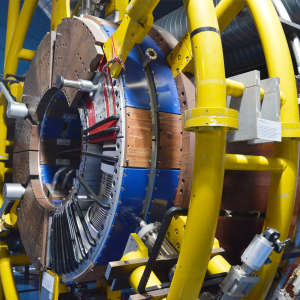Three main collections coexist within the Museum of Electrical Technology: Enel (300 objects), Sirti (3028 objects) and the University collection, consisting of over 1000 pieces.
The collection of the Museum on display is distributed in five distinct sections, each of which is dedicated to a different historical period.
1 – Early Electricity (up to 1880)
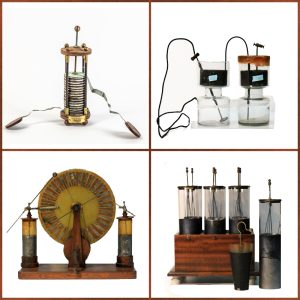
In the 18th century, electricity experimenters were a virtual scientific community. They travel, they write to each other and present their experiments in the cultural salons of high society members. They arouse admiration and curiosity by using electricity for educational and medical uses as well as for entertainment. Around 1800, Alessandro Volta comes to a decisive intuition: the battery. For the first time it is possible to produce a faint, but continuous flow of electricity. From his invention the scientific study of electric current and the research on its practical applications are born. In 1831, Michael Faraday made the fundamental discovery of electromagnetic induction, on which the functioning of generators and motors is based.
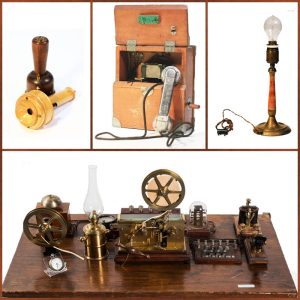
In the mid-18th century, the first practical applications of electricity appeared: telegraphy, electrolytic deposition, and, subsequently, lighting.
2 – Electricity Comes of Age (towards the turn of the 20th century)
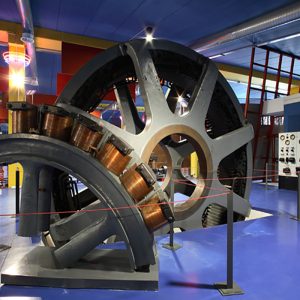
Who would have imagined, in the mid-19th century, that electricity would have made an intercontinental network of telegraphic communications possible? At the turn of the century, the commercial success of the telephone and the pioneering experiments in wireless telegraphy caused awe and admiration both among scientists and the general public. The most important developments are recorded in the applications of electricity to lighting. In 1880 incandescent lamps came into use and a few years later electricity was used for tramways and railways, thus showing the full potential and versatility of this new source of energy.
3- Electricity for Everyone (the early 20th century)

In the first half of the 20th century the power plants for the production of electricity increased in number and size, the transmission networks spread throughout Europe. Electric trams appear in many cities and electricity is used in almost all new railways. Electric motors are increasingly used in industries. The first telephone connections require the use of an operator, but are gradually replaced by automatic switchboards. Radio broadcasts begin in the 1920s, television broadcasts in the late 1930s, but only in some locations. Around the 1950s, about half of the continent’s population owns electric lighting at home, but few still own refrigerators and washing machines.
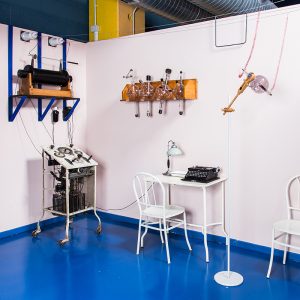 New types of lighting are being developed and electrical equipment is beginning to be widely used in medical diagnostics and therapy as well.
New types of lighting are being developed and electrical equipment is beginning to be widely used in medical diagnostics and therapy as well.
4- Electricity Everywhere (late 20th century)
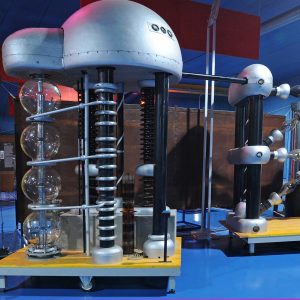
Electricity is now available in almost all homes in Europe, but there are still parts of the world where it does not reach. Power grids cover entire nations and cross national borders. Most power plants employ turbines that use steam produced from fossil or nuclear fuel.
Arc lamps are used to illuminate the streets. Fluorescent lamps, initially mainly used in public and commercial environments, began to be used in domestic ones after the Second World War. Transistors and other semi-conductor devices, including integrated circuits, revolutionize electrical communications and computing systems.
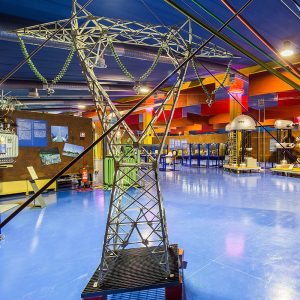
The “consumer society”, which starts in this period, is powered by electricity and is controlled by electronics; the process of miniaturization of all devices begins. At the end of the century, personal computers and mobile phones became products of large private use. In homes, electricity is increasingly used, from toothbrushes to alarm systems.
5- Electricity Today and in the Future
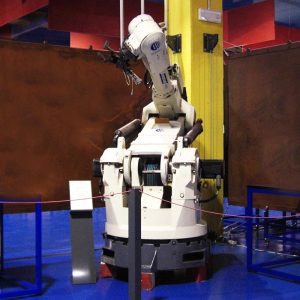
The demand for electricity continues to grow, but there are some problems alongside the benefits. The plants that burn fossil fuels produce carbon dioxide, thus contributing to global warming, while the elimination of waste from the nuclear power plants is an unresolved problem. These issues can be partially solved in two ways: some improvements in control technologies allow to obtain energy saving solutions and the new development of electrical energy sources, such as solar cells and fuel cells, allow to avoid the generation of harmful by-products.
In the future, nuclear fusion, the energy source of the sun and stars, could become a concrete resource.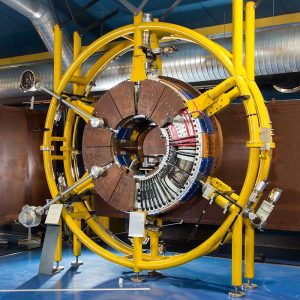
Advances in electronics lead to smaller and “intelligent” devices in all fields: energy, communications, entertainment, medicine and robotics. Cars are becoming more and more “electric” and computers are becoming smaller and more powerful. In the information age, you can communicate instantly and with other people anywhere in the world, as if you were in the same room. Today our world contains so many electrical appliances that it is impossible to imagine our life without electricity.

